 (Monks at Bandei Srei temple)
(Monks at Bandei Srei temple)The variety of architectural styles and the endlessly different and interesting sculptures, carvings and engravings are what make the temples of Angkor such a huge draw for tourists. Thirty kilometres to the north of the main cluster of temples lies one of the smallest but most beautifully carved buildings of all.
Bandei Srei was built towards the end of the temple building period, after which the Angkorian empire collapsed, in large part due to environmental disaster - over-development led to a fall in the water-table and insufficient water supplies to support the local population. Isn´t it sobering how often this type of story is repeated wherever I go...
the Angkorian empire collapsed, in large part due to environmental disaster - over-development led to a fall in the water-table and insufficient water supplies to support the local population. Isn´t it sobering how often this type of story is repeated wherever I go...
To get to Bandei Srei, I had to hire a Remorque-moto (and driver). This is a bit like a motorbike with a covered cart attached to the back (kinda like the local version of a tuk-tuk - I should have taken a photo of it). It took more than an hour to get there, which works out at about 15 mph, so I probably wasn´t imagining things when we were overtaken by kids on Bicycles on the downhill stretches.
photo
The slow journey gave me a great view of the countryside though. From the very limited parts I saw, Cambodia is clearly a very beautiful country. I would absolutely love to have spent some time in the more remote parts. On the plus side, at least I have that to look forward to in Africa when I will have a chance to really get out into the middle of nowhere.
 On the trip back from Bandei Srei I visited the Landmine Museum. Cambodia perhaps more than any country has suffered from the evil of landmines. They were laid all over the country in the 1970s and 80s by both sides in a series of bloody wars. I wasn´t aware that landmines are actually designed not to kill, but to maim, the idea being that a wounded soldier on the battle field takes up more of the enemy´s resources than a dead one. With that kind of mentality, it´s maybe not surprising that no regard was paid to civilian casualties. Unbelievably, many landmine sites weren´t even mapped or recorded with the result that it´s not just the cost that prevents removal of landmines these days, but also the fact that no-one knows where many of them are.
On the trip back from Bandei Srei I visited the Landmine Museum. Cambodia perhaps more than any country has suffered from the evil of landmines. They were laid all over the country in the 1970s and 80s by both sides in a series of bloody wars. I wasn´t aware that landmines are actually designed not to kill, but to maim, the idea being that a wounded soldier on the battle field takes up more of the enemy´s resources than a dead one. With that kind of mentality, it´s maybe not surprising that no regard was paid to civilian casualties. Unbelievably, many landmine sites weren´t even mapped or recorded with the result that it´s not just the cost that prevents removal of landmines these days, but also the fact that no-one knows where many of them are.
At the landmine museum there is also a rehabilitation centre for children injured in landmine explosions. There are pictures on the walls with stories of individual kids. The landmines may have been laid in the 1970s, but the dates of birth for these children are mostly in the 1990s. Can´t imagine a clearer definition of the term ´innocent victims´.
Bandei Srei was built towards the end of the temple building period, after which
 the Angkorian empire collapsed, in large part due to environmental disaster - over-development led to a fall in the water-table and insufficient water supplies to support the local population. Isn´t it sobering how often this type of story is repeated wherever I go...
the Angkorian empire collapsed, in large part due to environmental disaster - over-development led to a fall in the water-table and insufficient water supplies to support the local population. Isn´t it sobering how often this type of story is repeated wherever I go...To get to Bandei Srei, I had to hire a Remorque-moto (and driver). This is a bit like a motorbike with a covered cart attached to the back (kinda like the local version of a tuk-tuk - I should have taken a photo of it). It took more than an hour to get there, which works out at about 15 mph, so I probably wasn´t imagining things when we were overtaken by kids on Bicycles on the downhill stretches.
photo
The slow journey gave me a great view of the countryside though. From the very limited parts I saw, Cambodia is clearly a very beautiful country. I would absolutely love to have spent some time in the more remote parts. On the plus side, at least I have that to look forward to in Africa when I will have a chance to really get out into the middle of nowhere.
 On the trip back from Bandei Srei I visited the Landmine Museum. Cambodia perhaps more than any country has suffered from the evil of landmines. They were laid all over the country in the 1970s and 80s by both sides in a series of bloody wars. I wasn´t aware that landmines are actually designed not to kill, but to maim, the idea being that a wounded soldier on the battle field takes up more of the enemy´s resources than a dead one. With that kind of mentality, it´s maybe not surprising that no regard was paid to civilian casualties. Unbelievably, many landmine sites weren´t even mapped or recorded with the result that it´s not just the cost that prevents removal of landmines these days, but also the fact that no-one knows where many of them are.
On the trip back from Bandei Srei I visited the Landmine Museum. Cambodia perhaps more than any country has suffered from the evil of landmines. They were laid all over the country in the 1970s and 80s by both sides in a series of bloody wars. I wasn´t aware that landmines are actually designed not to kill, but to maim, the idea being that a wounded soldier on the battle field takes up more of the enemy´s resources than a dead one. With that kind of mentality, it´s maybe not surprising that no regard was paid to civilian casualties. Unbelievably, many landmine sites weren´t even mapped or recorded with the result that it´s not just the cost that prevents removal of landmines these days, but also the fact that no-one knows where many of them are.At the landmine museum there is also a rehabilitation centre for children injured in landmine explosions. There are pictures on the walls with stories of individual kids. The landmines may have been laid in the 1970s, but the dates of birth for these children are mostly in the 1990s. Can´t imagine a clearer definition of the term ´innocent victims´.

I met someone who works at the museum and made a donation of $50 from my fund towards the work that goes on there.
 (This photo came about because the monks asked if they could have their picture taken with me, rather than the other way around. They were very excited (for monks) and queued up one after the other, while their friend took pictures with his camera. Maybe they had never met someone from Bolivia before!)
(This photo came about because the monks asked if they could have their picture taken with me, rather than the other way around. They were very excited (for monks) and queued up one after the other, while their friend took pictures with his camera. Maybe they had never met someone from Bolivia before!) (I absolutely love this engraving. The whole temple was covered in similar art forms, all made 800 years ago. Nothing quite like this elephant though, which is just superb. )
(I absolutely love this engraving. The whole temple was covered in similar art forms, all made 800 years ago. Nothing quite like this elephant though, which is just superb. )
(Ta Prohm - incredible sights as the jungle steadily takes back ground that was lost over 800 years ago.)
 (Dawn at Angkor Wat)
(Dawn at Angkor Wat)



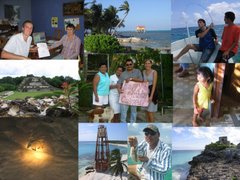
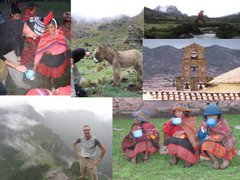
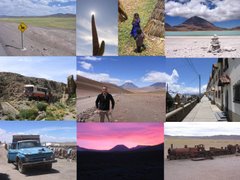
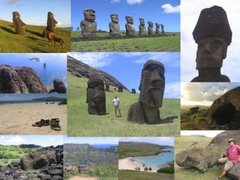
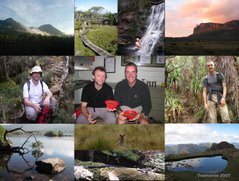
No comments:
Post a Comment